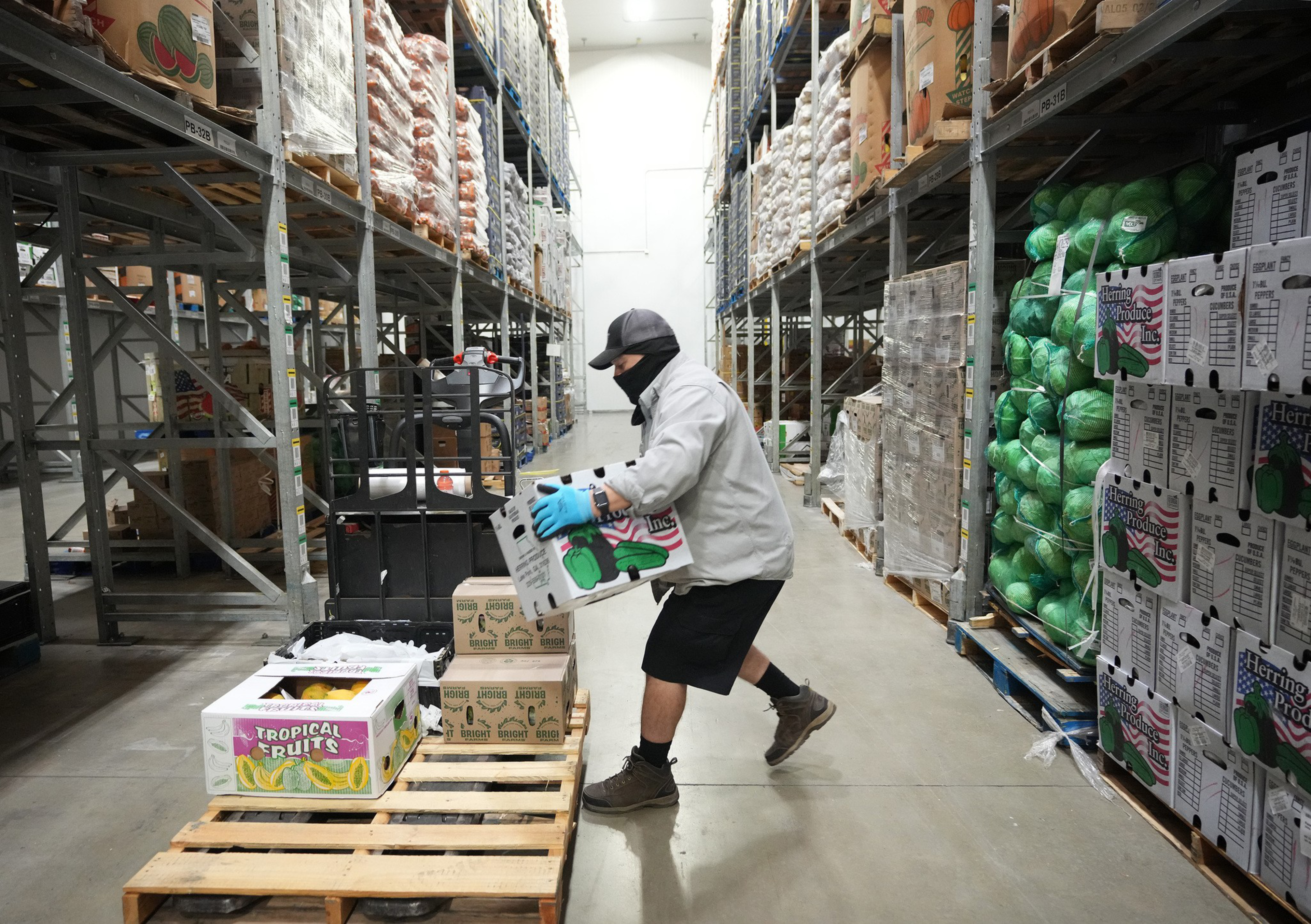With CalFresh benefits set to expire Nov. 1, San Francisco leaders are stepping in to ensure that recipients across the city retain access to food, even as other parts of the Bay Area face growing uncertainty.
Mayor Daniel Lurie, the San Francisco Board of Supervisors, and the Crankstart Foundation on Wednesday announced the launch of an $18 million emergency program to support nearly 112,000 San Franciscans who would otherwise lose their federally funded benefits by the end of the week. The initiative combines $9.1 million from the city’s budget reserves with a $9 million match from Crankstart, the family foundation of The Standard’s chairman, Michael Moritz.
Every San Francisco household enrolled in CalFresh will receive a virtual gift card to use to pay for food, Susie Smith, a deputy director in the San Francisco Human Services Agency, said Wednesday during a special meeting on food security hosted by the Board of Supervisors. “I don’t know another county or state that’s activating in this way,” Smith said. “It’s a pretty unusual effort.” The San Francisco-Marin Food Bank and GiveCard are partners on the emergency program, she added.
The program will not be a dollar-to-dollar replacement for CalFresh but will offer varying levels of support. One- to two-person households will receive $200, those with three or four people will receive $350, and those with five or more will get $500. Physical cards for CalFresh participants will be available upon request, with support provided to those activating virtual cards.
Jesus Go, a 78-year-old San Francisco resident, expressed relief after learning of the city’s emergency assistance during the federal benefits lapse.
Go, who has relied on CalFresh benefits for about five years, said he was worried when the federal government shutdown began four weeks ago, threatening to disrupt a lifeline for many low-income San Franciscans. He was relieved to learn that, for November at least, there will be support.
“Yeah, yeah, it’s gonna be useful,” he said. “Almost everything is running smooth, you know.”
According to an Oct. 24 statement (opens in new tab) from the San Francisco-Marin Food Bank, the organization is “deeply disappointed that Congress did not take the necessary steps” to ensure that Supplemental Nutrition Assistance Program payments continue despite the shutdown. The food bank plans to mobilize a temporary emergency Shutdown Community Response plan, though no additional details were provided.
Bay Area food banks prepare to meet demand
With no city-level salvation in sight, residents and advocates outside of San Francisco are feeling the pressure.
California has joined a lawsuit with 20 other states against the Trump administration, claiming that its refusal to fund SNAP benefits is unlawful. But a lengthy legal battle provides little relief to those in need of a meal now.
Oakland resident Milvian Malachi joined more than 100 others Wednesday morning at the Manna from Heaven food pantry at UCSF Benioff Children’s Hospital in Oakland. There, as 69th in line, she waited to collect groceries to take back to her husband, a disabled veteran, and their four kids. With the upcoming delay to her CalFresh benefits, Malachi — who has epilepsy — worries the setback could mean a breaking point for her family.
“Honestly, I’m kind of freaking out,” Malachi said. “I’ve been getting EBT food stamps, but, according to the government, we probably won’t be getting that soon. I’m totally dependent on my husband’s disability income, and God forbid that they take that away. Then we’re not gonna be able to pay rent, car notes, bills, or even feed the kids.”
Malachi’s frustrations are shared by a growing number of Californians, said Caitlin Sly, CEO of the Food Bank of Contra Costa and Solano. The looming funding cliff for federal food benefits is just the latest stressor for some Bay Area residents, compounding concerns about the impact of the passage of H.R. 1, the One Big Beautiful Bill Act. “There’s a lot of unknowns, and I think anxiety has been high for the last several months,” Sly said. “People have been hearing about funding cuts, they’ve heard about H.R.1 passing and the devastating cuts to both food assistance and healthcare that are being implemented through that bill, and now this government shutdown. It’s just chaos upon chaos upon chaos.”
Sly said food will not run out at her facility, but residents might see lighter produce boxes due to increased demand. “We have so many more people who are in need of our services,” she said.
On Tuesday, the Alameda County Board of Supervisors approved $10 million to support the Alameda County Community Food Bank. But the organization received double the typical number of calls to its emergency food helpline in the past week, according to Michael Altfest, director of community engagement and marketing.
“Between federal employees not receiving pay, CalFresh benefits likely not being funded on Nov. 1, and the SNAP cuts from H.R. 1 being implemented next month, our food bank is entering what we would call an ‘active emergency response,’” Altfest said.
Second Harvest of Silicon Valley, another major regional food bank, serves approximately half a million people monthly — a figure matching pandemic-era demand — and officials expect that number to rise.
“Without SNAP, thousands of families in our community will lose the benefits they rely on each month to buy groceries,” said Diane Hayward, Second Harvest’s director of communications. “Food banks cannot fill this gap alone.”
